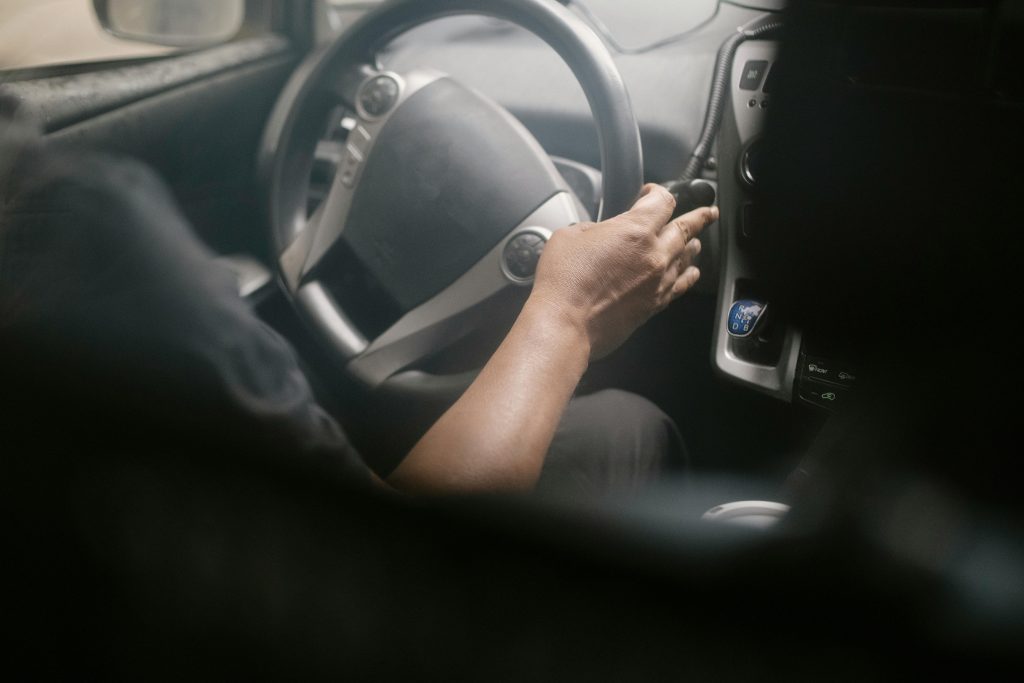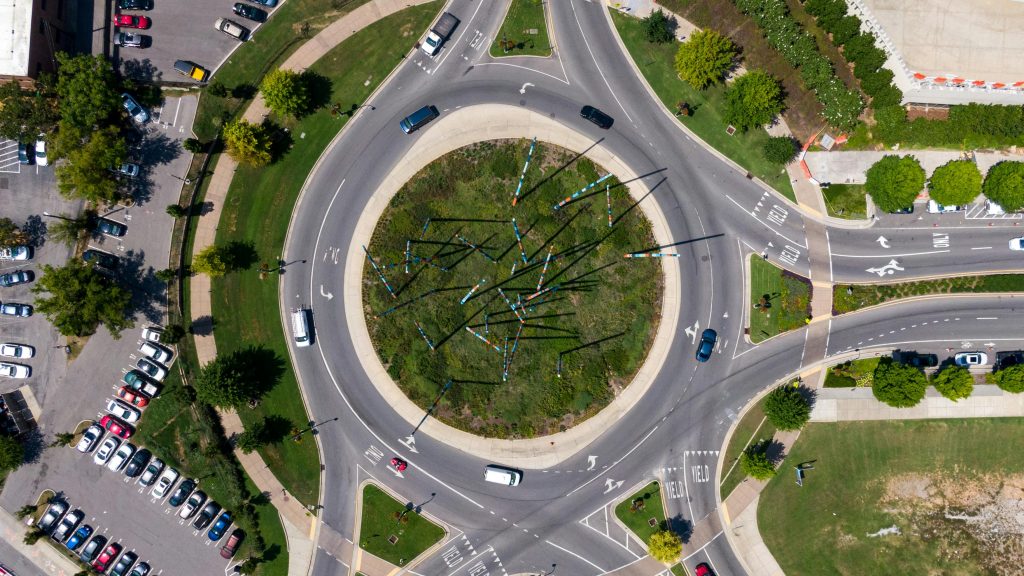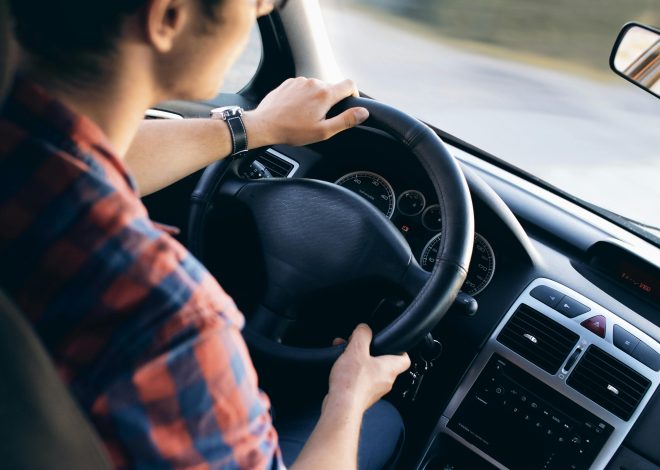
What’s the Safest Way to Navigate Roundabouts?
Introduction
Roundabouts are increasingly replacing traditional intersections around the world, reducing serious crashes and improving traffic flow. Yet for many drivers, negotiating a circular junction can feel daunting—particularly at multi‑lane roundabouts or those with heavy pedestrian and cyclist activity. Mastering roundabout safety hinges on understanding right‑of‑way rules, choosing the correct lane, signaling clearly, and maintaining appropriate speeds. In this guide, we’ll break down each step—approach, entry, circulation, and exit—offering practical tips, real‑world examples, and insights from traffic‑safety experts. Whether you’re a new driver or simply looking to boost your confidence, you’ll learn proven strategies to glide through roundabouts smoothly and safely.

Why Roundabouts Enhance Road Safety
- Reduced Conflict Points:
- Traditional four‑way stops have 32 potential vehicle conflict points. Roundabouts cut this to 8, drastically lowering collision opportunities.
- Lower Speeds:
- Curved approaches force drivers to slow, reducing crash severity when incidents occur.
- Continuous Flow:
- Eliminating full stops (when clear) minimizes rear‑end collisions and idling emissions.
- Pedestrian Safety:
- Crossing is limited to one direction of traffic at a time and set back from the circle, giving drivers more reaction time.
1. Approaching the Roundabout
1.1 Observe Signs and Road Markings
- Advance Warning Signs: Yellow diamond or blue circular signs alert you to the upcoming roundabout.
- Lane Arrows on Pavement: Indicate which lane leads to which exits—essential for multi‑lane roundabouts.
1.2 Choose the Correct Lane Early
- Single‑Lane Roundabouts: One lane only—no lane choice needed.
- Multi‑Lane Roundabouts:
- Right‑Hand Exit (First Exit): Use the outside (right) lane.
- Straight‑On (Second Exit): In two‑lane circles, you can usually use either lane, but outside lane is safest.
- Left‑Hand Exit (Third Exit) or U‑Turn: Use the inside (left) lane.
- Example: Approaching a 3‑lane roundabout where your exit is the 4th exit (U‑turn), merge into the leftmost lane well before the junction.
1.3 Adjust Your Speed
- Recommended Speed: 15–20 mph (25–30 km/h) in most urban roundabouts.
- Brake Smoothly: Ease off the accelerator before the yield line; avoid sudden braking that can jar following vehicles.
2. Entering the Roundabout
2.1 Yield to Circulating Traffic
- Give Way to Vehicles on Your Left: Most roundabouts use left‑hand circulation; yield to any vehicles already in the circle.
- Watch for Cyclists and Pedestrians: They may be crossing near entry points—slow and scan carefully.
2.2 Gap Assessment
- Big Enough to Enter Safely: Only proceed when you have a safe gap that allows you to merge without forcing someone to brake.
- Avoid Unnecessary Hesitation: If the gap is sufficient, accelerate gently to merge smoothly.
2.3 Maintain Lane Discipline
- Stay in Your Chosen Lane: Do not drift between lanes in the roundabout—this confuses other drivers.
- Use Mid‑Circle Lane Markings: Some roundabouts have dashed lines—stay between them.
3. Circulating Within the Roundabout
3.1 Keep a Steady, Controlled Speed
- Maintain Consistent Speed: Around 10–15 mph (15–25 km/h), adjusting as needed for visibility and traffic density.
- Avoid Overtaking: Do not pass other vehicles in the circle; wait until you exit.

3.2 Monitor Your Surroundings
- Check Mirrors Regularly: Be aware of drivers behind or alongside who may be preparing to exit.
- Watch for Pedestrians & Cyclists: They may be crossing on the exit leg—stay vigilant.
3.3 Signaling Properly
- Signal Left to Show Continuation: If you’re going past the first exit, you may signal left after entering to show you’re not leaving immediately.
- Signal Right for Your Exit: As you pass the exit before yours, indicate right to alert others of your intention to leave.
4. Exiting the Roundabout
4.1 Right‑Turn Signal
- Activate Early: Signal right as you pass the exit before yours to give clear notice.
- Keep in Lane: Exit from the lane you entered—do not cut across lanes.
4.2 Check Your Blind Spots
- Over-the-Shoulder Glance: Before leaving, look for cyclists or motorcyclists who may be overtaking on your right.
- Check for Pedestrians: They often cross just outside the circle’s exit—yield the right‑of‑way.
4.3 Resume Normal Speed Safely
- Accelerate Gradually: Merge into the new road at posted speeds; avoid abrupt acceleration.
- Cancel Indicators: Turn off your signal after exiting to prevent confusion.
5. Special Considerations and Edge Cases
5.1 Large/Rural Roundabouts
- Higher Speeds: Some rural roundabouts permit 30–40 mph; adjust approach speed accordingly while still yielding.
- Wide Splits: Multi‑lane rural circles may have separate lanes for different destinations—obey overhead signage.
5.2 Mini‑Roundabouts
- Smaller Diameter: Often found in residential areas; sometimes just painted circles on the road.
- Same Rules Apply: Yield on approach, circulate clockwise, no lane changes, signal exit.
5.3 Emergency Vehicles
- Do Not Enter: If lights and sirens are active, do not enter the roundabout—stop before the yield line.
- Exit Quickly: If you’re in the circle and hear sirens, continue around and exit safely, then pull over.
5.4 Pedestrian‑Heavy Roundabouts
- Raised Crosswalks: Slow to walking pace for pedestrian crossings, even if no one is visible.
- Partial Yield: In some designs, vehicles must stop for pedestrians mid‑leg—know local rules.
6. Real‑World Example: Multi‑Lane Roundabout Drill
Imagine you’re driving to an office located at the third exit of a two‑lane urban roundabout:

- Approach: You see lane arrows: left lane “Exits 2 & 3,” right lane “Exit 1 only.” You merge into the left lane.
- Yield: Slow to 15 mph, yield to traffic from your left in both lanes.
- Enter: Gap appears, you merge into the circle, staying in the left lane.
- Signal Left: Immediately signal left to indicate you’re passing the first exit.
- Circulate: Keep a steady speed, remain left, and watch mirrors.
- Signal Right: After passing exit 2, signal right.
- Exit: Maintain your lane, check blind spots, yield to any crossing pedestrian, and smoothly exit.
7. Tips from Traffic Safety Experts
- Practice in Low‑Traffic Conditions: Start on a quiet roundabout or off‑peak hours to build confidence.
- Visual Lead: Look across the roundabout—spot your exit early (about a third of the way around).
- Avoid Last‑Minute Lane Changes: Decide your lane well ahead of the entry to prevent aggressive merges.
- Use Reference Points: Note central island features (statues, planters) to orient yourself and judge your position.
- Stay Calm: If you miss your exit, circle back—never reverse or cut across lanes.
Conclusion
Roundabouts offer a safer, more efficient alternative to traditional intersections—but only when drivers apply the correct techniques. By choosing the right lane, yielding properly, signaling clearly, and maintaining controlled speeds, you’ll navigate roundabouts with confidence. Remember to adapt to local rules, watch for vulnerable road users, and practice regularly in low‑pressure environments. With these strategies, every roundabout can become a smooth, stress‑free part of your journey.



